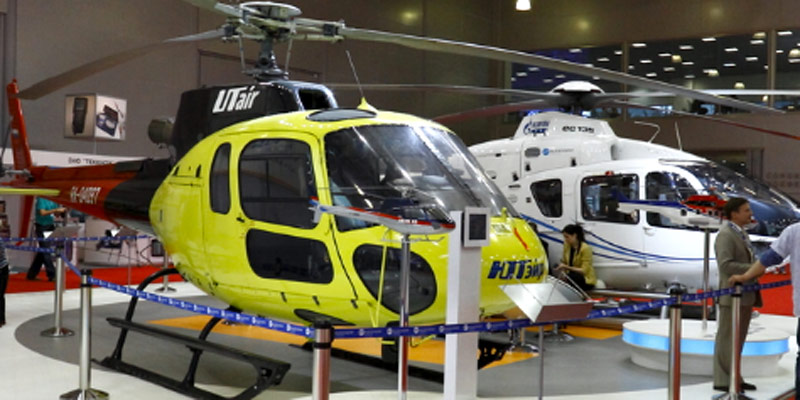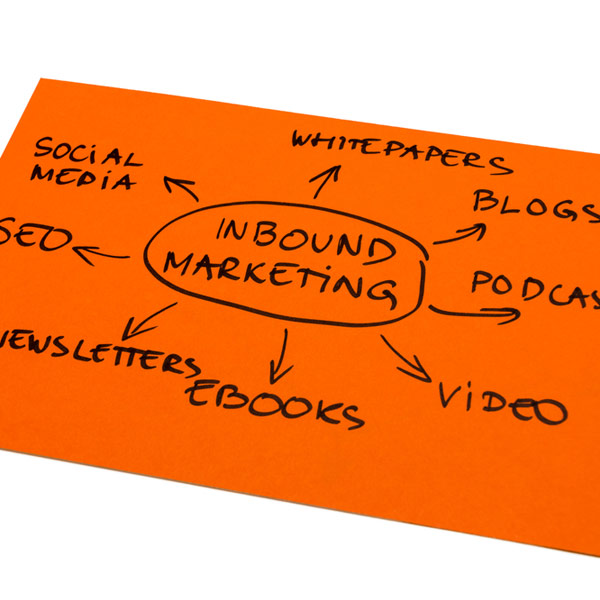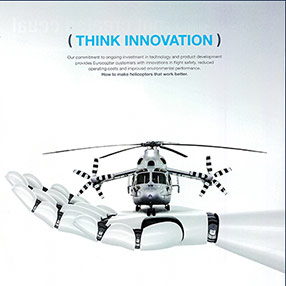Author: Grace
Airbus Rebrand: Will it Fly?
 Rebranding is risky business and more than a few well-intended efforts have ended badly. The JC Penney rebrand was an epic fail that could drive the retailer into bankruptcy. A revamped Gap logo sparked a global uprising. And I’ve already blogged about American Airlines’ journey to become a “new American” by revamping its image.
Rebranding is risky business and more than a few well-intended efforts have ended badly. The JC Penney rebrand was an epic fail that could drive the retailer into bankruptcy. A revamped Gap logo sparked a global uprising. And I’ve already blogged about American Airlines’ journey to become a “new American” by revamping its image.
The most recent headline-grabbing change hits closer to home as EADS is renamed Airbus, and Eurocopter becomes Airbus Helicopters. The wisdom of this move is being hotly debated on news forums and online industry communities. At a high level, some folks acknowledge that Airbus is a successful brand with strong global equity. And we all know that the EADS name carried a lot of political baggage.
Drilling down, the military community seems to agree that nobody wants to take a bus to the fight.
And the helicopter people, well, they are mostly perplexed and pissed off. One blogger said killing the Eurocopter name is “ludicrous,” “silly” and a “PR disaster.” Another said it is “ridiculous to change the most successful global brand in helicopters.” I know from experience that any discussion of a name or logo change is an emotional minefield that turns rational people into raving lunatics. In this case, they may have a point. As one of my colleagues said, “if it ain’t broke, don’t fix it.”
In a well-intentioned effort to achieve unity and consistency in a rebranding, too many companies are inflexible and fail to account for the specific sensibilities and needs of niche markets. The Airbus shift may be a case of moving too far too fast. The prestige and power of the Eurocopter brand cannot be understated. The employees who have helped this company achieve industry prominence are personally invested in the brand, as are customers and helicopter enthusiasts worldwide.
Changing an iconic brand is like playing with fire. Let’s hope the fine folks at Eurocopter don’t get burned.
Get More from Your Aerospace Marketing Budget
 BDN recently surveyed a group of aerospace and defense marketing professionals to better understand their needs, preferences and challenges. The findings and trends were enlightening, and we’ll soon be sharing them in a new white paper.
BDN recently surveyed a group of aerospace and defense marketing professionals to better understand their needs, preferences and challenges. The findings and trends were enlightening, and we’ll soon be sharing them in a new white paper.
Interestingly, most respondents said insufficient funding is their No. 1 challenge and frustration. We all know marketing is not usually a top priority for aerospace and defense businesses. Many view it as an expense or a necessary evil but, done properly, marketing is an investment that delivers bottom-line results.
This is where it gets tricky. As marketers, we want more resources to do more things, but we are not always willing to embrace the level of discipline required to credibly demonstrate return on investment (ROI). This is a subject BDN has already covered extensively, and you can read more in the white paper section of our website.
If you want to demonstrate marketing ROI, but don’t have a plan in place quite yet, you might consider adding discipline to your decision-making process — finding opportunities to save or spend your limited budget more wisely. Start by asking some hard questions.
Do you have an annual marketing plan that outlines what you are going to do, and why? A strong plan that has buy-in from management and sales can keep you from veering off track with costly, unplanned activities that don’t truly support your goals and objectives.
Do you follow a process each year to evaluate your trade show selection and attendance? Can you link any given show to past leads or sales? Most companies spend more on trade shows than any other marketing activity. A rigorous and impartial evaluation of each and every event may help you eliminate non-productive activities and free up funds for other projects.
This same rigor should be applied to all print and online advertising buys. Is your evaluation process fair and consistent? Is it fact-based, and does it include examining the performance of each venue and ad? Monitoring will reveal which ads and media are generating leads, and will spotlight those that don’t measure up. By requiring accountability you can eliminate non-performing ads and placements for big savings.
Take a closer look at what you are still printing and why. Can a data sheet or brochure be just as effective on a tablet or online? Work with your sales team to understand their needs and identify areas where hard copies are no longer necessary.
What about travel? Travel is important, because face-to-face interactions are always best. But are there ways to leverage technology and use video conferencing tools in lieu of a costly, time-consuming trip?
These are just a few examples of how you might use the budget you have more effectively by measuring your current efforts and questioning the status quo. As you build a history of metrics, and demonstrate your willingness to find and eliminate unnecessary spending, you’ll be in a better position to request and receive more budget, more influence and even more respect.
Airshows: Yes or No
 I watched an Su-30MKI crash and burn at the 1999 Paris Airshow. The pilot ejected and survived. My desire to watch air shows did not. More high-profile accidents with fatalities followed, most notably in Reno and recently in Dayton.
I watched an Su-30MKI crash and burn at the 1999 Paris Airshow. The pilot ejected and survived. My desire to watch air shows did not. More high-profile accidents with fatalities followed, most notably in Reno and recently in Dayton.
Every accident was troubling, but I watched the news coverage in the mainstream and trade press, and followed the chatter on social media. I’m not going to make a case for or against airshows. But I will make a case against hypocrisy, because many of us seem to want it both ways.
As spectators, we want the thrill of a great show, but not the risk or consequences. As an industry, we welcome the positive attention, but when something goes wrong, we decry any perceived focus on the negative. To wit: Immediately after fatalities in Dayton, I saw aviation people posting about how terrible it was that crash videos had been posted on YouTube because, “now that’s all anyone will remember” about the deceased. Watching the news, I listened as a woman expressed outrage because her children were upset after witnessing the fatal crash. Yes, these things are regrettable. But, honestly, what else would you expect?
If you perform in an air show and things go well, you’ll be part of an elite group and a media darling. If you are involved in an accident, well, that’s all some people will remember. If you attend a show, it’s quite possible that you will see an airplane crash and witness someone’s death. You and your family could also be injured or killed.
When it comes to airshows, we all need to decide what’s right for us. And while our choices will differ, I hope we can agree on just one thing: we can’t have it both ways.
Photography Tips For Aviation Photographers
 Photographing helicopters air-to-air with sharp details while also having the rotor blades suitably blurred is a challenge for any photographer. The aircraft holding you (the photographer) is often cramped, bumpy, and vibrating, while the aircraft you are trying to capture is also moving, sometimes because of turbulence, sometimes because of mismatches in speed or altitude or pilot comfort levels. Here are some quick tips for capturing great shots in these challenging conditions. Since you have to use a shutter speed that allows the blades to blur (if they aren’t blurred, the aircraft will look like it’s about to fall out of the sky), your main challenge is to keep the camera steady during each exposure.
Photographing helicopters air-to-air with sharp details while also having the rotor blades suitably blurred is a challenge for any photographer. The aircraft holding you (the photographer) is often cramped, bumpy, and vibrating, while the aircraft you are trying to capture is also moving, sometimes because of turbulence, sometimes because of mismatches in speed or altitude or pilot comfort levels. Here are some quick tips for capturing great shots in these challenging conditions. Since you have to use a shutter speed that allows the blades to blur (if they aren’t blurred, the aircraft will look like it’s about to fall out of the sky), your main challenge is to keep the camera steady during each exposure.
When you’re shooting on the ground, you might lean against a lamp post or building when your shutter speeds need to be slow. In an aircraft, you don’t want to lean against the door frame or seat or anything, really, because those structures are being vibrated by the engine and rotors and air flow around the aircraft. So touch the aircraft as little as possible — let your body absorb as much of the vibration and jiggles as possible. And speaking of air flow, unless your airspeed is extremely low (which is possible in a helo), keep your lens out of the slipstream just outside the door or window. Even if you can’t see the vibration through your viewfinder, your lens was not designed to slip cleanly through the air, so it will not be at rest if it’s out there. This applies to lens hoods, too. Keep them out of the wind, or take them off (and stow them securely).
Next, if you have stabilization features in your camera or lens, try using them; they should help. But review some shots carefully to be sure the features aren’t making things worse. Sometimes the systems will be trying to move the sensor or lens elements or whatever, during the time the shutter is open, and the result is more blurring. A gyroscopic stabilizer can be a big help, not only by functioning as intended — countering unwanted motion in the camera with opposing motion induced by the gyro — but merely by being heavy they tend to dampen smaller motions caused by vibrations. These systems add weight and complexity, with batteries and cables, and that extra weight can be awkward and compounded by G-forces during maneuvers, but they can seriously increase your percentage of good shots. Finally, shoot a lot — digits are cheap, while aircraft operations are not — and check your results closely when you have a lull in the action, such as when the subject aircraft is maneuvering away from you. Zoom in on the display on the back of the camera to make sure your settings and technique are achieving the desired effects. And if you are not getting sharp details in the subject aircraft with suitably blurred blades, improve your technique or go ahead and increase your shutter speed. Coming back with usable, if not ideal, imagery is better than coming back with nothing but blurry ones. Oh, and fly safe. Listen to your pilots, ask them for what you’d like, but accept what they’re willing to do. No image is worth injury or death.
An Introduction to Inbound Marketing for A&D
 I’ve officially jumped on the Inbound Marketing bandwagon, and I hope you do, too. Inbound marketing is a way to enable your target audience to find you at the right time — precisely when they are seeking knowledge and information. You’re pulling them in gently, and they are allowing it to happen. In a push, you are broadly sending your message out, hoping against hope that someone takes notice. And the less they notice, the more you push. Because you want to sell them something. And they know it. No one wants to be sold to. However, when we are ready, we appreciate having the information and resources at hand to enable a smart buying decision. Inbound marketing transforms the marketing engagement from interruption-based to permission-based.
I’ve officially jumped on the Inbound Marketing bandwagon, and I hope you do, too. Inbound marketing is a way to enable your target audience to find you at the right time — precisely when they are seeking knowledge and information. You’re pulling them in gently, and they are allowing it to happen. In a push, you are broadly sending your message out, hoping against hope that someone takes notice. And the less they notice, the more you push. Because you want to sell them something. And they know it. No one wants to be sold to. However, when we are ready, we appreciate having the information and resources at hand to enable a smart buying decision. Inbound marketing transforms the marketing engagement from interruption-based to permission-based.
I don’t believe it replaces the outbound process, especially for aerospace marketing, but I do believe we need a better balance. In general, interrupting people who have no interest what you want to tell them does not make a lot of sense beyond perhaps planting a seed for the future. But, what if you create compelling content and become a hub of valuable information for your potential customers? What if you optimize your website to improve the ranking in search engines, so it’s easy for prospects to find you? And what if you engage in social media as a force multiplier where others share your content with their networks? Try it and see what happens. By embracing inbound marketing techniques, BDN averages 16 leads a month just from people who visit our website looking for information about aerospace marketing. Inbound marketing is not a panacea. But it’s an important and effective tool that marketers must acknowledge and understand to stay relevant and effective
Branding: It’s in the Bag
 Would you pay $9,000 for a handbag? How about $150,000 or more?
Would you pay $9,000 for a handbag? How about $150,000 or more?
Plenty of people do. In fact, the Hermès Birkin bag, created in 1984 for actress/singer Jane Birkin, is so coveted that it commands these prices and is reputed to have a 36-year waiting list. But why?
The handbag has come to represent success, achievement and status. As one handbag blogger wrote, “The Birkin is more than just a bag, it’s a lifestyle.”
The woman who buys a Birkin is not buying a bag that will serve a function in her life. She is buying into a brand — her perception of what the bag stands for — and she will willingly pay a premium to join this exclusive club.
Irrational, you say? Most certainly. And that is the power of a great brand. A great brand can drive profits, big profits. It can protect you from your competition. And it’s nothing more than perception. Pretty amazing.
Build your brand. Shape audience perception. And then laugh all the way to the bank, preferably carrying a Birkin stuffed with cash.
Do you know what your brand stands for to customers and prospective customers? Do you guard it like the irreplaceable asset that it is? How can you leverage branding to improve your business performance?
Get On Board: Introduction To Whiteboard Videos
 I’m suddenly obsessed with white board videos as a great way to tell technical stories in a quick, concise and eminently watchable way. We’ve all seen too many traditional, snooze-worthy corporate videos. They are a big investment, but if they are not masterfully produced they do little but bore the audience and clearly convey that your company is boring, too. They are not being used much in aerospace marketing yet, though our friends at Able Engineering were among the first, and we love the end result.
I’m suddenly obsessed with white board videos as a great way to tell technical stories in a quick, concise and eminently watchable way. We’ve all seen too many traditional, snooze-worthy corporate videos. They are a big investment, but if they are not masterfully produced they do little but bore the audience and clearly convey that your company is boring, too. They are not being used much in aerospace marketing yet, though our friends at Able Engineering were among the first, and we love the end result.
Some people might worry that a white board concept is too edgy or cartoony for our industry, but it’s not. Heck, the United States of America has branded a “White House White Board” online to explain potentially daunting topical issues (note to President Obama: lose the talking heads).
If you have not yet seen or experienced a white board video, start with a Google search and start exploring. They’re all the rage, and, well, we’re on board.
Advertising: Keep it Simple, but with Soul
 I’m all for simplicity in advertising, especially in aerospace. In our industry, simple messaging and graphics stand out because they are unique, unexpected, and, well, genuinely refreshing. But simplicity alone isn’t enough.
I’m all for simplicity in advertising, especially in aerospace. In our industry, simple messaging and graphics stand out because they are unique, unexpected, and, well, genuinely refreshing. But simplicity alone isn’t enough.
Two ads especially caught my attention in the January issue of Rotor & Wing. The first had a strong headline: “More Technologies. More United,” and informed readers that Goodrich and Hamilton Sundstrand are now part of UTC Aerospace Systems. The ad successfully conveys the intended message, but it has no soul. It fails to evoke any emotion or give viewers a sense of “who” this new company is, and that’s too bad. The graphics, though simple, don’t support the message or evoke any response, except maybe a yawn, in the viewer.
American Eurocopter’s ad features a generous amount of white space, along with the headline “Think Innovation.” The graphic — a helicopter resting on a high-tech robotic hand, delivers the message quickly and clearly so viewers “get it” immediately.
Do your ads pass the “simplicity with soul” test? It’s a question worth asking.
Aerospace Advertising: How to Grab Attention
 No matter the stated goals of an ad, to be effective it must accomplish three things — capture the viewer’s attention, communicate the desired facts or attitudes, and cause the viewer to feel how what they’ve learned is important and desirable and how a future with the advertised product or service or position will be a better future for them.
No matter the stated goals of an ad, to be effective it must accomplish three things — capture the viewer’s attention, communicate the desired facts or attitudes, and cause the viewer to feel how what they’ve learned is important and desirable and how a future with the advertised product or service or position will be a better future for them.
See, understand, feel.
If the ad does not grab attention, if it is skipped over, ignored, or even actively avoided, there will be no step two.
How can you grab attention? Graphics are often the tool of choice — a photo or illustration that draws the eye, colors that stand out (bold, subtle, different, non-existent), a composition that causes a pause. But a sufficiently bold (in design or sentiment) headline can perform the same function.
Once grabbed, the viewer’s attention must be rewarded. There should be an appropriate connection between what caused the pause and the next level of engagement. While there is often descriptive or narrative copy, it is not a requirement and might even be a crutch, supporting an otherwise pointless or uninteresting message. An image might communicate all that is required. Or text might be unaccompanied by other graphics. Or somewhere in between.
Remember, the point of all the effort to write, design, and otherwise produce this bit of commercial art must be a change in perception. Such changes are greatest when the ad supports the brand image that is developed across all media and touch points, and leads to the viewer believing that their future will be better with the product or service communicated in the ad. It’s as simple as that.
Simple to state, perhaps, but not simple to execute.
Perhaps the first step is easily judged — does the ad stop the viewer long enough to allow for step two? This requires evaluating the ad not just in itself, but also in context. How does the ad fit with, or stand out from, the editorial, graphics, layout, and other advertising that surround it and otherwise comprise its milieu? Other parts of the magazine? Other ads in that market space? The general graphic sensibility of the times?
And if it stops the viewer, does the ad impart important information? Does it communicate why this product/service/action is superior to others on offer or, perhaps even better, why the offer has no competition and is desirable in and of itself?
But most importantly, does the information transform a viewer’s vision of their future? Does it make the viewer feel? That is the ultimate and singularly relevant question.
So, whether you are creating or judging an ad, be honest with yourself — does it make the viewer see, understand, and feel? If it does, it is working.
If it doesn’t, it’s a waste of money.
Critiquing An Aerospace Advertisement: Russian Helicopters Ka-62
 I thought I’d take a look at an ad from a relative newcomer to the western markets, in particular an ad for the Ka-62 helicopter from Russian Helicopters.
I thought I’d take a look at an ad from a relative newcomer to the western markets, in particular an ad for the Ka-62 helicopter from Russian Helicopters.
In Monday’s, I talk about how an ad must perform three tasks, in succession, to be effective: cause the reader to see, understand, and feel.
To see the ad means to stop long enough, in flipping pages or pixels, to take an interest in what might be represented.
The Ka-62 ad does that for me. It is populated with elements that are arranged to clearly indicate the nature of the ad — it’s about a helicopter. A dynamic view of a helicopter, a bold and clear headline (simply the name of the product), and obviously enough copy to suggest I may learn something, but not so much that I’m afraid to venture into reading it. I’m intrigued and willing to take the next step: spend a few moments deciding if I can learn something of value.
Could the graphics and copy have led to an ad about training, or support, or ITAR issues, or insurance? No. The background image of the flight deck, and the tail rotor, and some other murky effect or graphic, all blended together, is not entirely clear in what is being offered, but the aircraft on top, pointing to the headline, prevents confusion.
What is a little confusing is the subhead: levius, citius, fortius. I assumed it to be Latin, and figured it was interesting, but with a poor comprehension of the language, I felt a bit ignorant. That feeling could have been ameliorated if the body copy provided the translation but it didn’t and so, right where you, ad creator, want to be creating understanding, you have placed a stumbling block. (By the way, it translates to smoother, faster, stronger; reasonable but pretty much wasted by presenting it in a dead language.)
The body copy is otherwise fine. Nothing fancy, and a little vague in its claims, but sufficient to add to my understanding of the product and leaving me with enough questions to be interested in learning more. Maybe not now, by calling or emailing or even typing in the URL, but on my radar to be alert for other ads, stories, press releases, etc.
So, did my seeing and understanding lead to a change in my feelings? Yes.
I knew almost nothing about the product, and now I’m primed to learn more as the opportunities present themselves. I feel better about the company, too, because the graphics and the writing were appropriate to the marketplace and rewarded me for the time I spent. If more ads from Russian Helicopters support this style and approach, I will be open to spending time with those ads. And if other media from them support the same brand image, it will strengthen their brand in my mind. And even if I determine this product is not for me, other offers from them will be viewed with an accepting eye.
Mission(s) accomplished.










